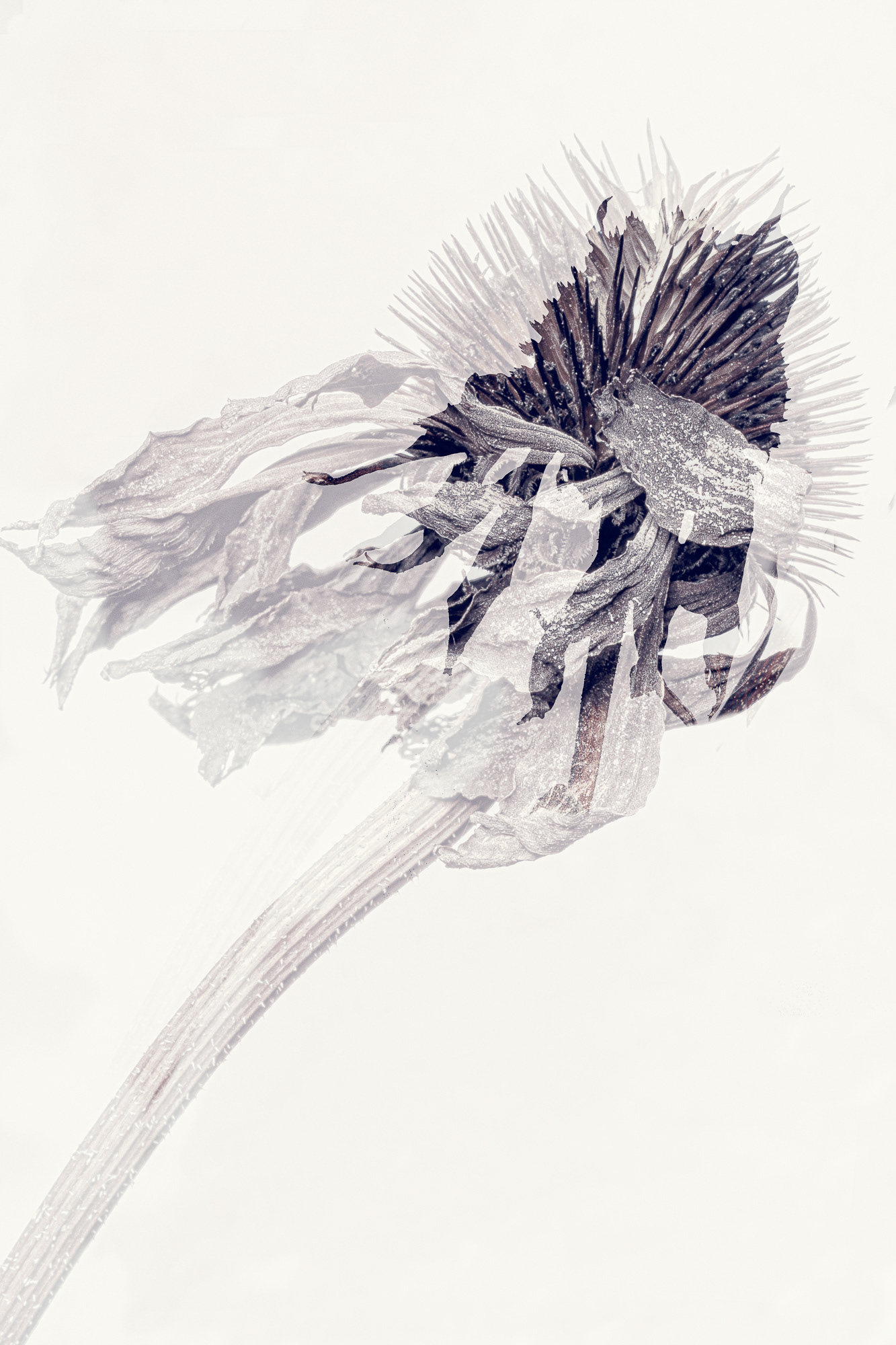
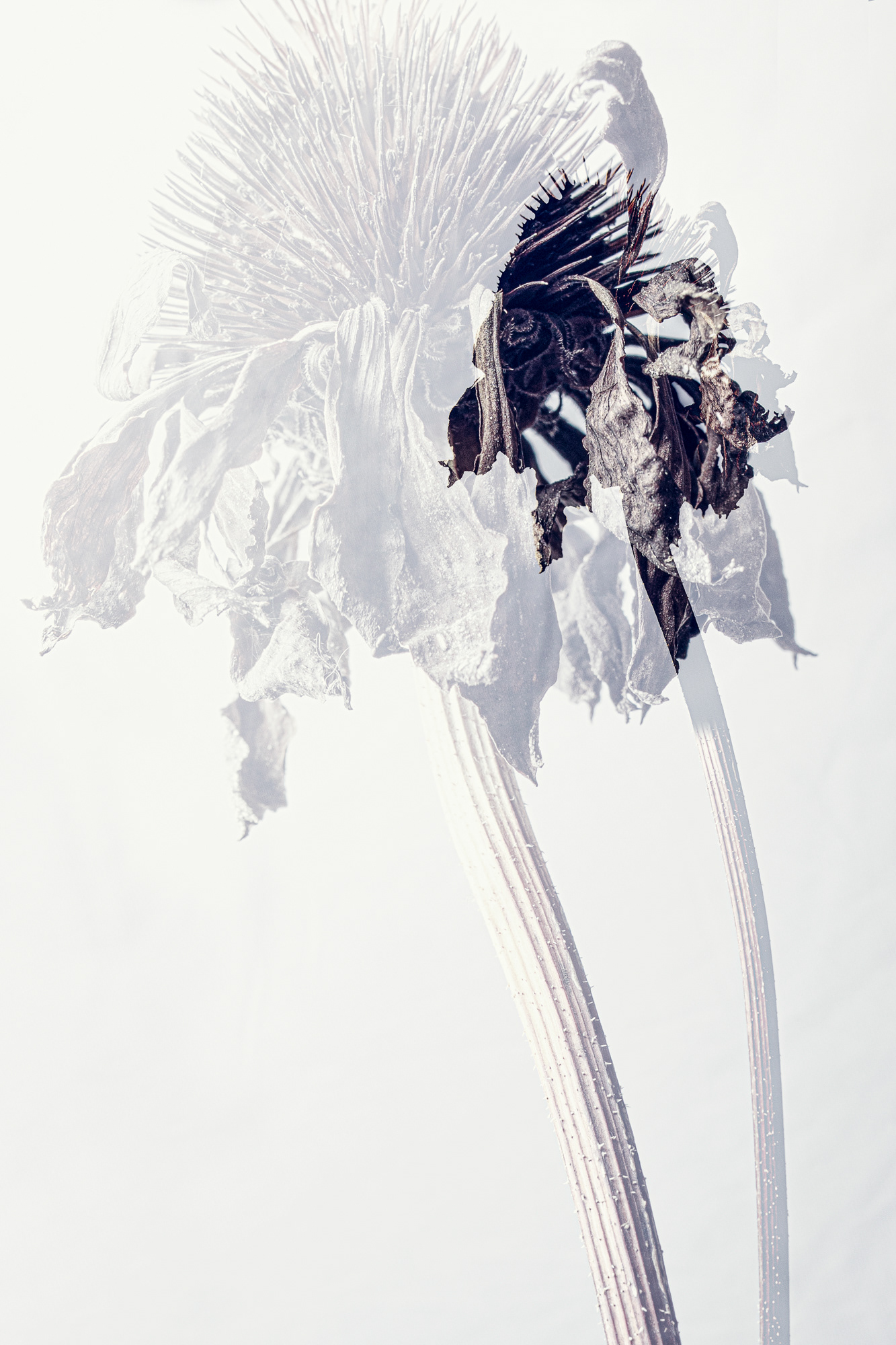
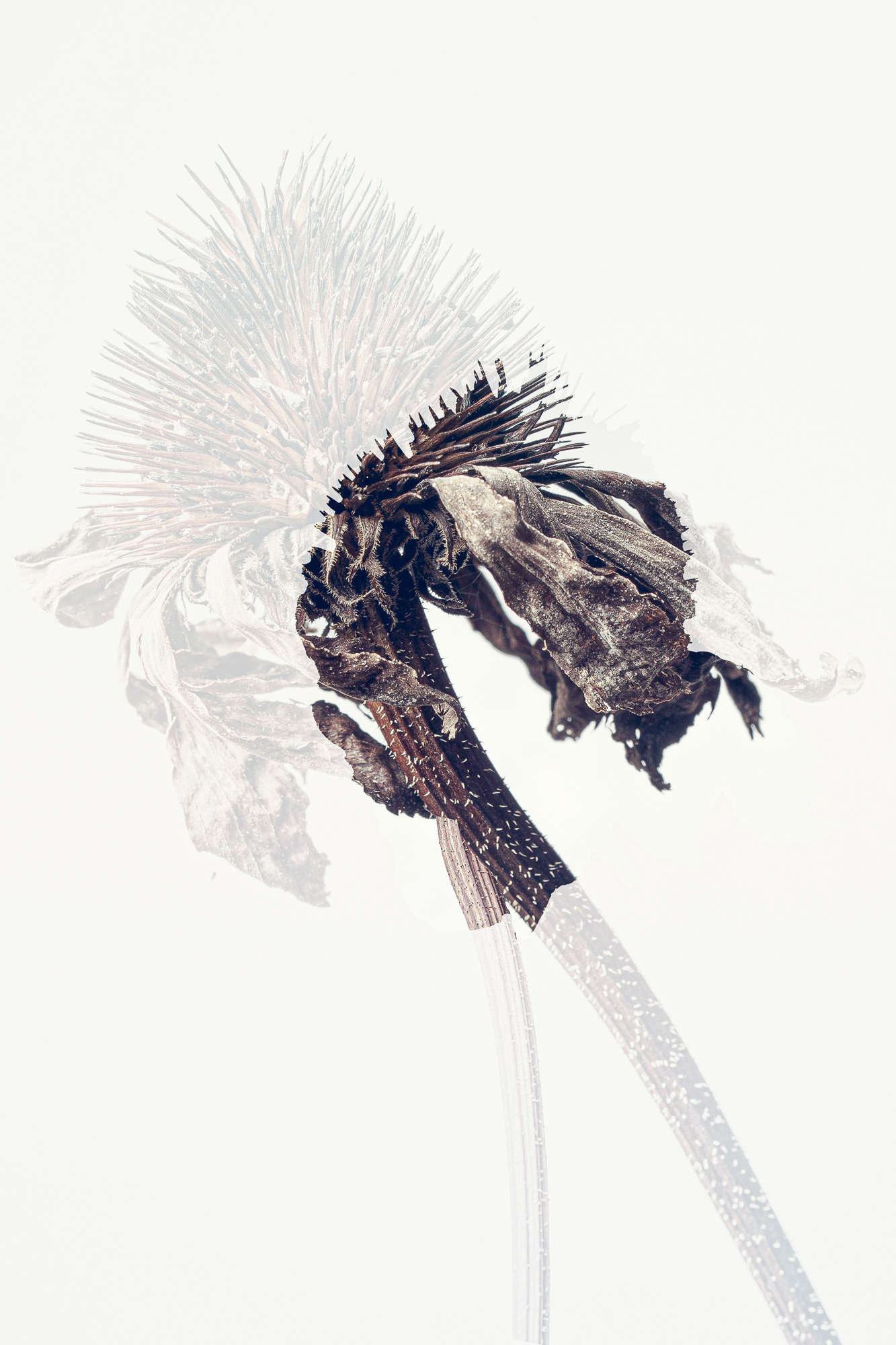
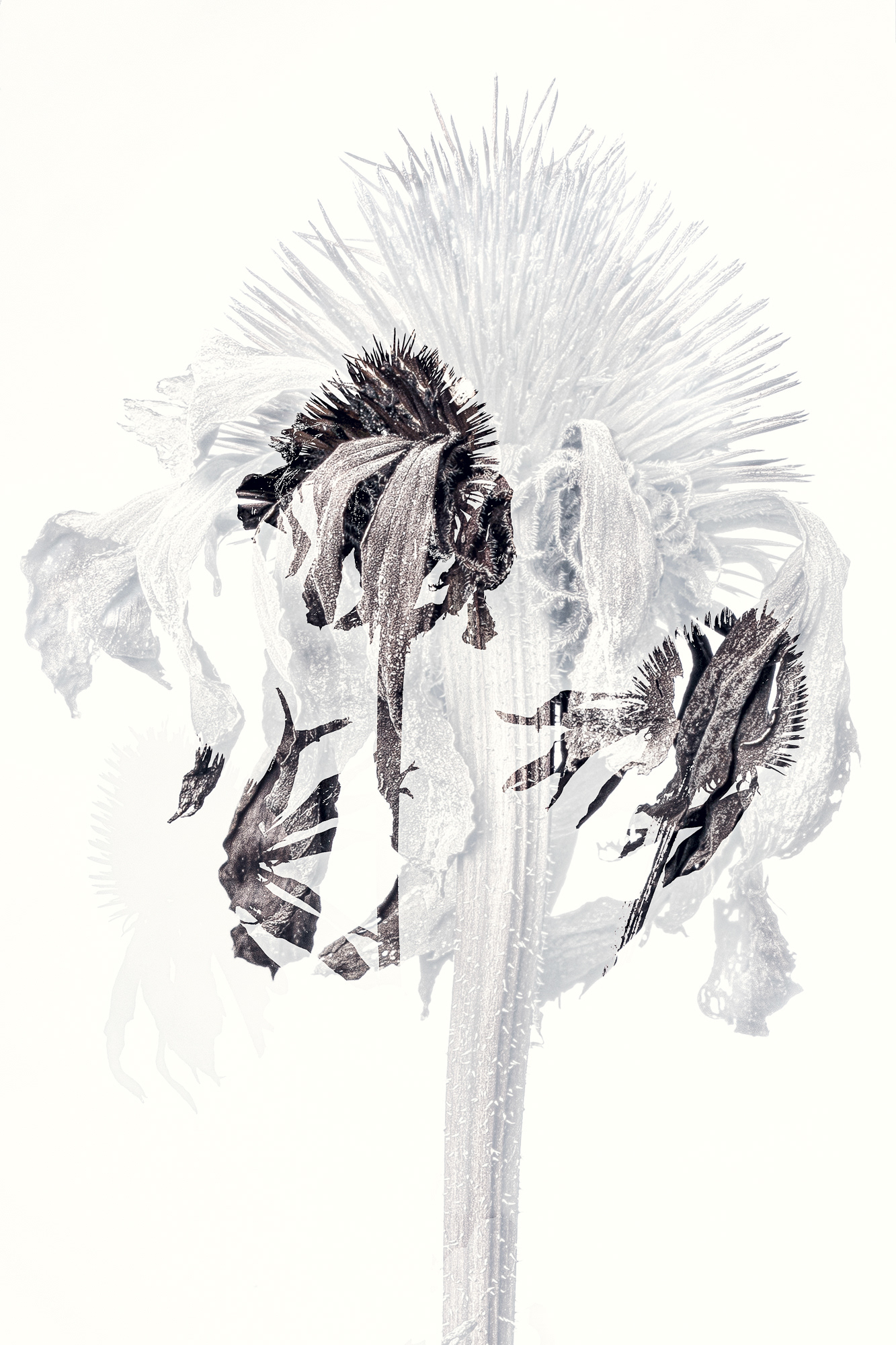
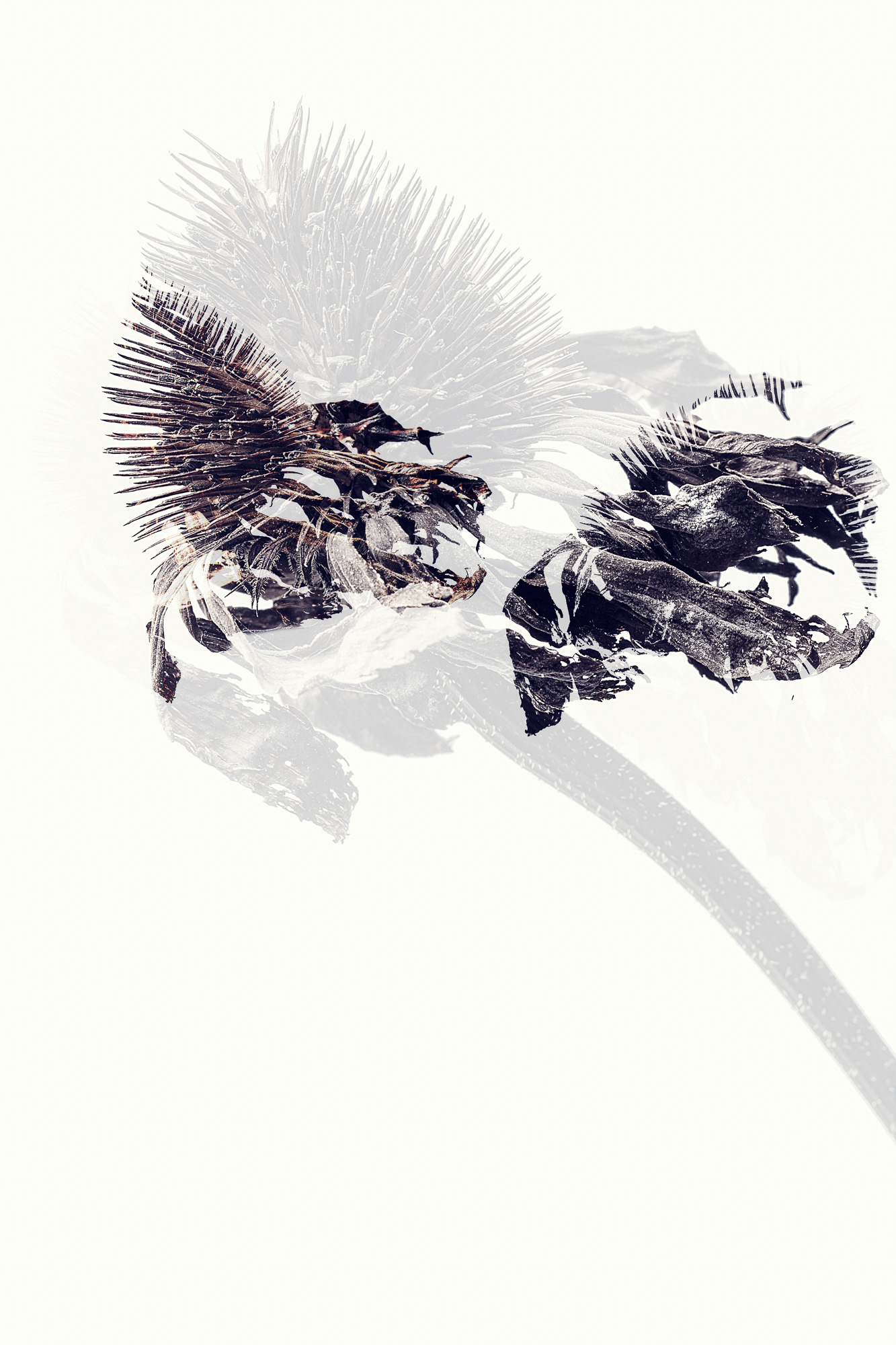
Echinacea is a plant that often has been used as a traditional medicine. Its name is derived from a Greek word meaning "sea urchin". In this series the images remind a 'strange creature' which was magnified under a microscope rather than what it really is -a pretty flower, which relates to the healing powers of the very plant. As a portrait photographer sometimes I portrait flowers. For these images I was looking for the relationship between form, texture and colour rather than an exact (re)presentation of the flower itself.




